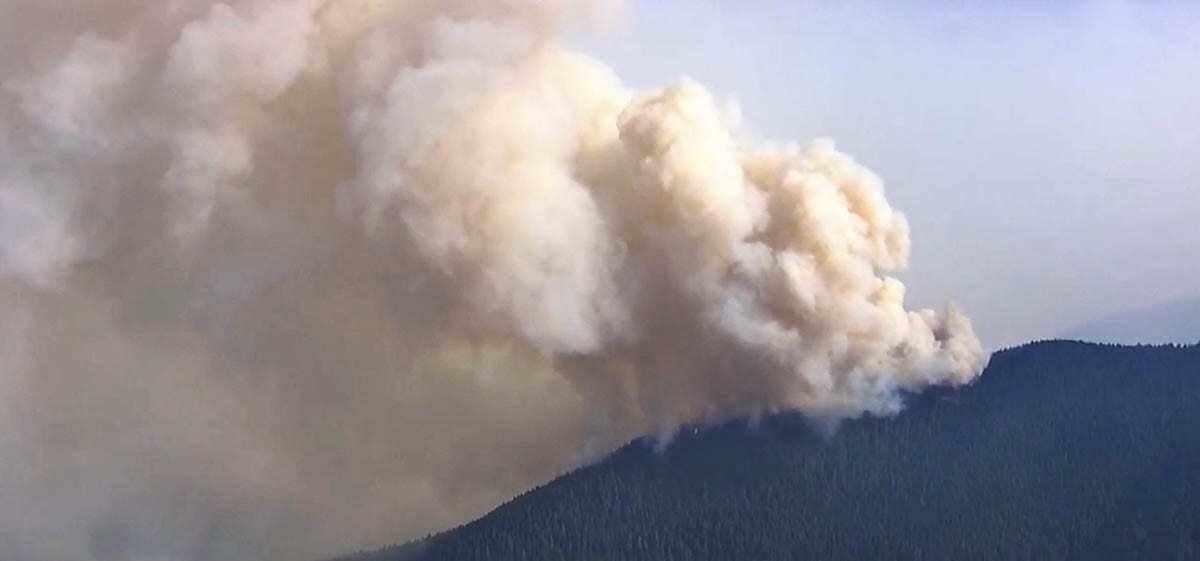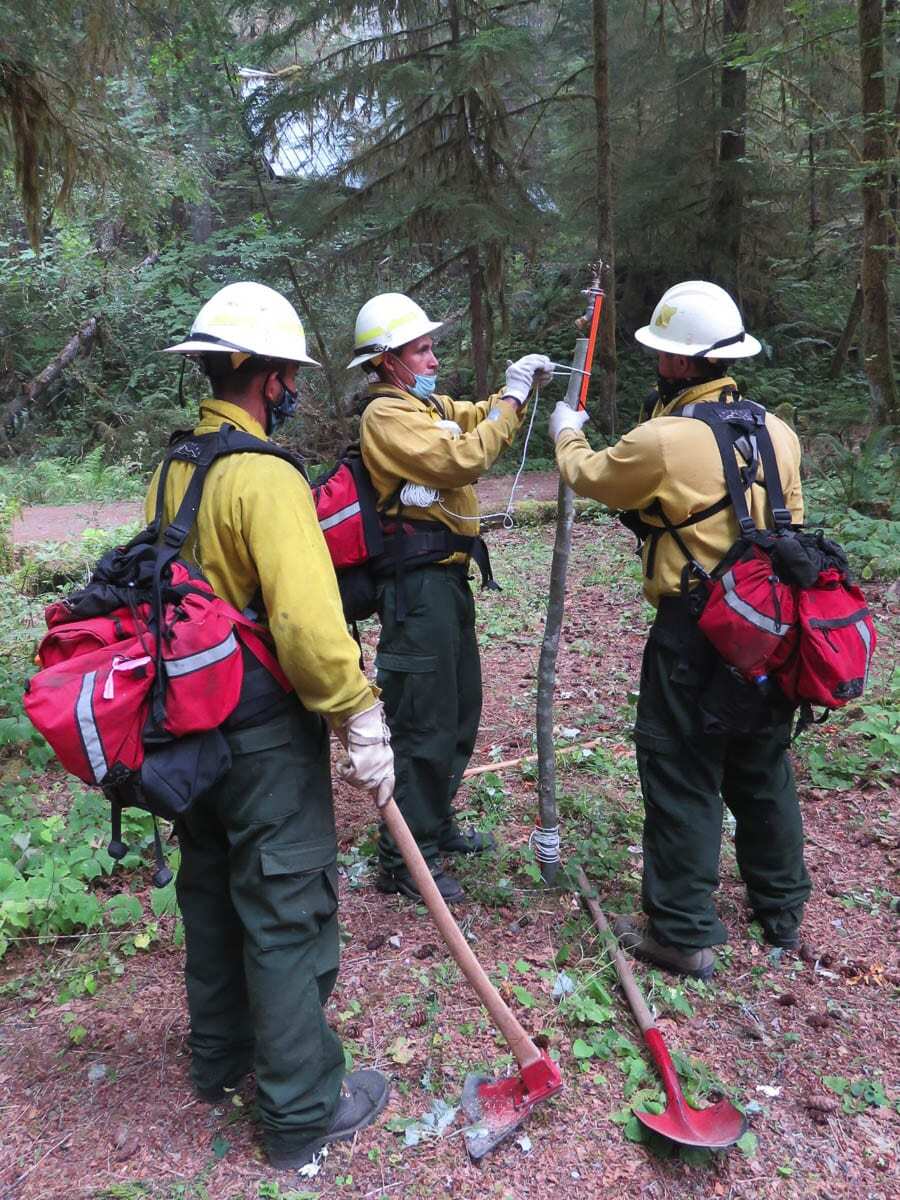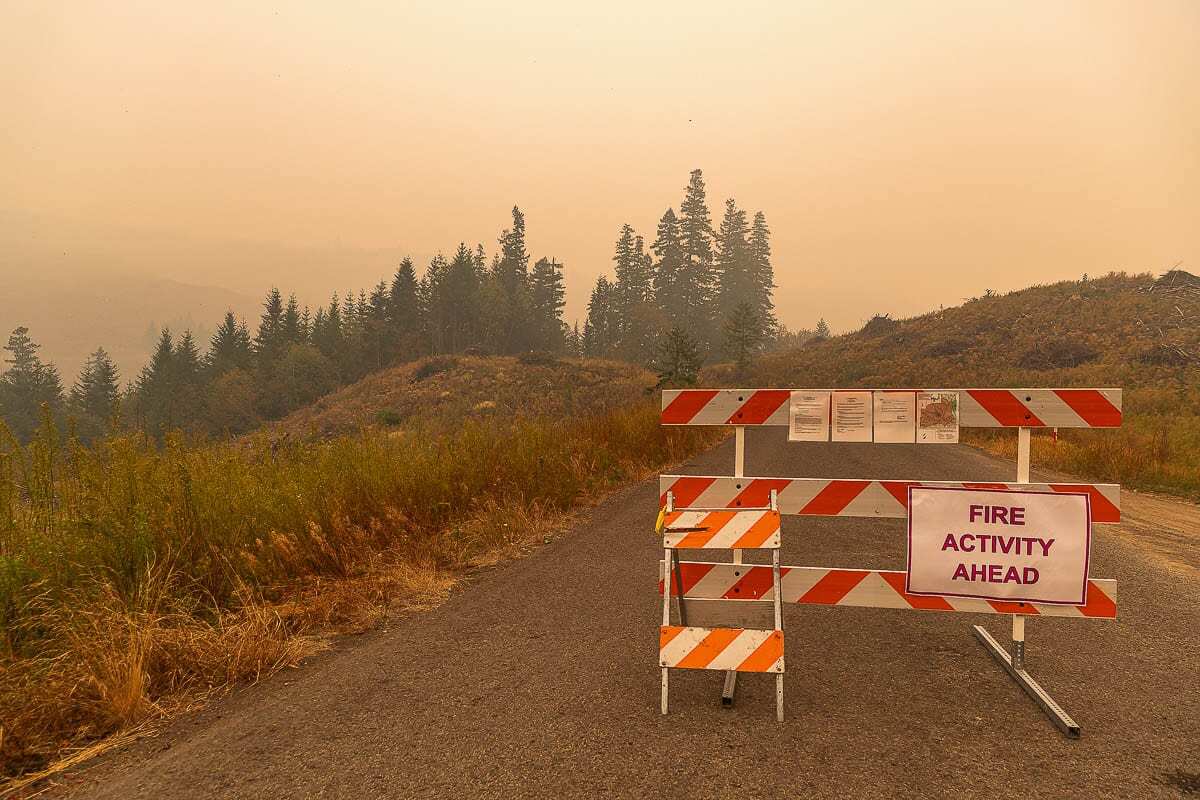Bill has passed both chambers with unanimous, bipartisan support
CLARK COUNTY — After passing both the house and senate with unanimous support earlier this month, Washington’s wildfire bill (HB1168) is headed to the governor’s desk where it is expected to be signed into law.
The bill was authored in large part by the team at Washington’s Department of Natural Resources (DNR), under the guidance of Hilary Franz, the commission of public lands.

After increasingly intense wildfire seasons over the last 10 years, the bill seeks to curb “uncharacteristic wildfire risk … through scientifically informed landscape-level treatments designed to restore forest ecosystem and watershed resilience.” According to Crosscut, the bill would increase wildland fire prevention and response spending by $125 million over the next two years; up to $328 million by 2027.
“We are on the brink of breaking the cycle of inaction that has fueled our wildfire crisis,” Franz wrote on Facebook earlier this month. “This historic funding will help us protect our communities, our forests and the air we breathe.”
In September of 2020, Clark County and much of the Pacific Northwest experienced the worst air quality in the world for multiple days, as smoke from local fires like Big Hollow, and fires along the coast converged to block out the sun. More than 812,000 acres of Washington forests were consumed by wildfires just last year.
“The increase in these uncharacteristic wildfires are the result of a combination of climate change-driven drought, hotter temperature, and windstorms; human development patterns and land use planning and activities; and where uncharacteristic fires occur in forests, by past fire suppression and departures from native ecosystem structure and function,” the bill introduction reads.
While receiving tremendous bipartisan support, lawmakers agreed to disagree on some of the reasoning. Many Democrats in the legislature support the entirety of the bill’s listed causes for increased wildfires, while some Republicans have questioned the role of climate change and pointed more directly to close to a century of mismanagement.
Exploring the solutions
Of the many suggested solutions listed within HB 1168, most are not new or revolutionary, but they are a shift for certain areas of the state and even the region.
Top of the list in better managing forests are prescribing burning, mechanical thinning, better interaction and equipping of homeowners in the wildland urban interface, and increased firefighting support. Many of these terms have become buzzwords in recent months, and their true definitions can be confusing.
Prescribed burning is one such term, as it pertains to, perhaps, the most surprising method of fighting wildfires: fire.
“Generally we use prescribed burning to light fires under controlled weather conditions,” said United States Forest Service Research and Fire Ecologist Sharon Hood. “It’s a way to plan for a burn with enough resources to keep it in a certain area; using fire to consume a lot of really small material: the dead needles and some logs that you see on the forest floor, kind of kill those really small trees that you can’t effectively remove with a chainsaw or logging equipment. It’s a more blunt force tool than mechanical treatments.”
Hood explained that many times, burning can remove harmful debris, and has found through her research that it can also improve the health of a forest. She also described how burning is most effective when it follows mechanical thinning.
Thinning can take several forms, Hood said, but often very closely resembles a careful logging operation. Much of the equipment used is the same, but the goal is not solely to harvest timber but to remove unhealthy trees, forest floor plants and dead logs or branches.
The process of thinning often uses chainsaws and chippers to remove undergrowth and branches; leaving behind a plethora of fire-ready tinder that is easily and safely removed in prescribed burning.

“When we talk about mechanical treatments, it’s a way of changing and kind of opening up the forest,” Hood said. “If you think about trees as fuel for the fire, changing the way that fuel is arranged, so it’s less flammable. Oftentimes, fuel treatments generally focus on the smaller trees, they might remove some larger trees to try to make openings in what we call the forest canopy.”
These types of precautions, which are pivotal to much of the improvements suggested in HB 1168, can be incorporated into the logging industry directly. The thinning process speaks for itself, but beyond it timber harvesting can adapt to look different in different applications.
Hood explained that when the goal is to harvest as many trees as possible for the production of paper and lumber, clear-cutting is still often used. This method is not necessarily detrimental, however, especially if the trees that are replanted after harvest are not homogeneous. Reintroducing this variety of tree types, mimics and untouched forest landscape, and fortifies the ecosystem against dangerous wildfires.
In logging situations where it is not as imperative to reach a substantial yield, selective harvesting can be more successful, she said. This is where individual trees are selected to be cut down due to their position, type or for the benefit of larger surrounding trees. This method has been tested on Ponderosa pine forest parcels in Montana, and shown to increase overall health and fire resistance.
“You’re trying to create these patches of different age classes and structures across the landscape,” Hood said. “I think logging that’s effective, both as a fuel treatment and for ecosystem services in the Pacific Northwest, is really trying to create different structures, you just don’t want to see a sea of forests that all looks the same. It’s a sign that that area could be highly susceptible to a fire because it could burn under uniform conditions.”
When it comes to the wildland urban interface (WUI) and how it impacts wildfires in Washington, understanding what it really is comes first. Right now, there are over 2 million homes at risk from a wildfire in the state, according to the bill. Many of these homes comprise what is known as the WUI.
It is the gray area, the overlap between city or town and open country. In Clark County, much of northern Battle Ground, Yacolt, Amboy and Cougar contain large areas classified as part of the WUI.
The reason the interface is such a critical component to understanding how to battle uncharacteristic wildfires, is because it greatly affects the men and women who actually do the battling. In the world of firefighting, there are typically two main categories: urban firefighters who handle structural fires, and wildland firefighters who tackle forest fires and any sort of uncontrolled burning in open country. The latter can be the famous Hot Shots.
The struggle comes in the gray Zone. Neither category of firefighter is perfectly equipped to handle this area, where they may encounter blazing swaths of trees and structures nestled amongst them. They simultaneously have to fight fire with two very different methodologies.
“You need a lot more firefighters, generally, in that area, because they’re highly valued resources, it’s people’s homes, it can be people’s lives if there hasn’t been time to evacuate,” Hood said. “The fire suppression methods could be much more intensive there, because it’s the risk of maybe losing human life compared to losing trees.”
“Our field treatments in the wildland urban interface, might call for removing a lot more trees and really opening up that space to try to keep fire from burning as high intensity.”
A large component to HB 1168 centers on better equipping, defending and educating the communities and people located in the WUI. This section of the bill also covers the goal of ensuring “ … workforce development investments from the wildfire response, forest restoration, and community resilience account … prioritize historically marginalized, underrepresented, rural, and low-income communities.”
Understanding the challenges
Some of the key challenges in accomplishing the broad goal of reducing wildfire intensity in the state center on working with private landowners, understanding there is not one perfect solution and the debate surrounding climate change.
In the state of Washington, nearly 8 million acres of private forest land exist. Subsequently, a large chunk of HB 1168 is aimed at educating private landowners on how to best protect structures and their property from fire. Nearly $20 million is earmarked for this exact task, according to Crosscut.
Additionally, many believe that only through the combination of many wildfire fighting techniques, tools and styles can the bill be effective. On the surface, this looks like mechanical thinning, prescribed burning and private landowner cooperation all at once.
“We don’t have one silver bullet,” Hood said. “To really change and mitigate our wildfire risk it’s going to take a ton of different approaches and coordination from the local to the federal level. It really is about people coming together from all different types of approaches, and using different tools because it is such a massive problem.”

When it comes to climate change, the familiar gridlock between the left, the right and the scientists that span the spectrum was largely absent from the passage of HB 1168. The most recent schism in this area occurred during the wildfire season of 2020. Some legislators declared the situation to be because of “climate fires” while others contested that while climate change was likely playing a role it was not the sole cause.
“Climate change is impacting our forest already, often the trees are more water stressed and have been stressed sooner with a higher temperature,” Hood said. “Climate change has a much more direct impact on fires … because temperatures are higher, there’s more days of the year that if there’s an ignition, someone flicks a cigarette out the window or a lightning strike, there’s more days of the year now that that fire could start from that ignition.”
Overall, Franz and others at DNR have been robustly praised by members of both parties for bringing vibrance to the issue, and providing directly applicable destinations for funding. Gov. Jay Inslee is expected to sign HB 1168 in the coming days. Only time will tell if the efforts spark the change needed.




